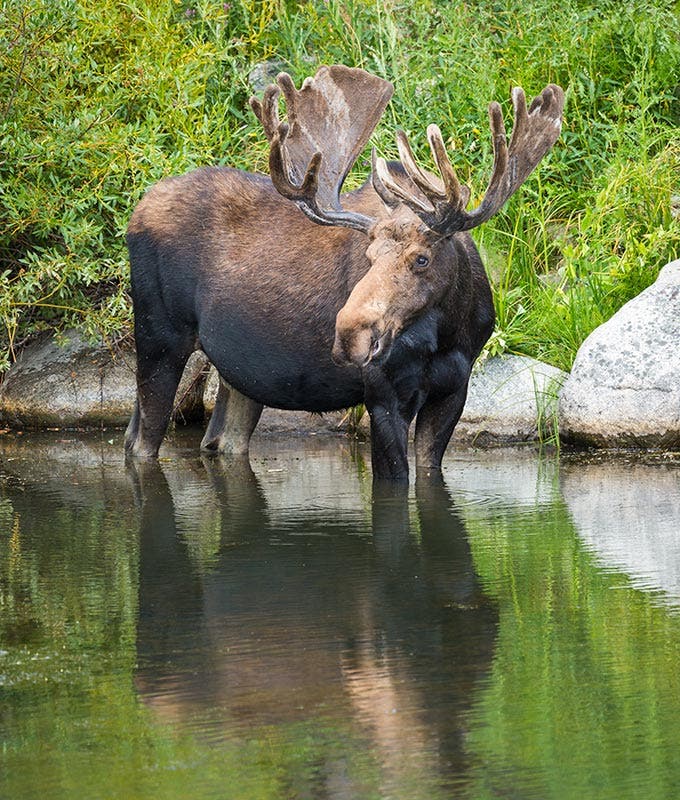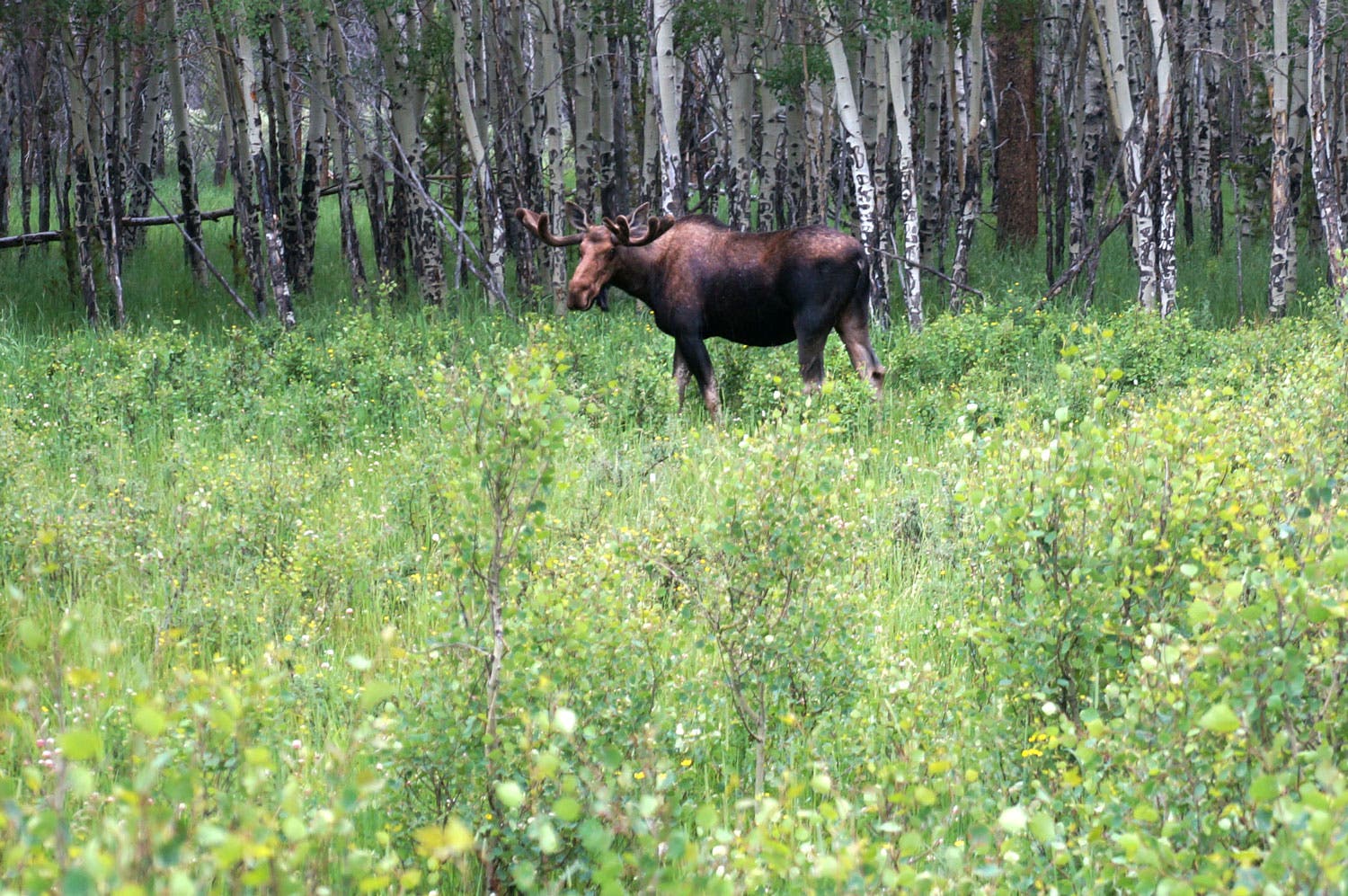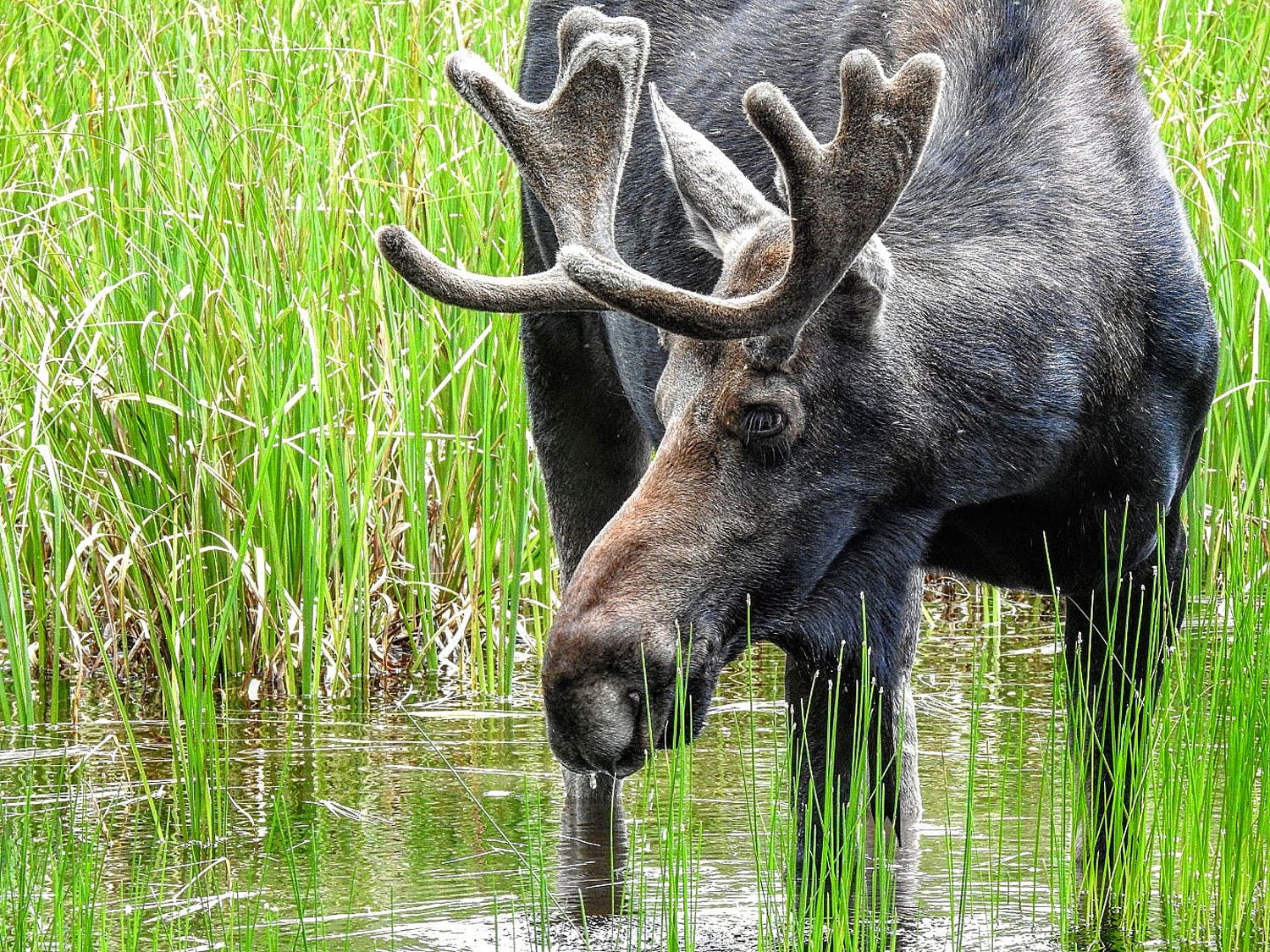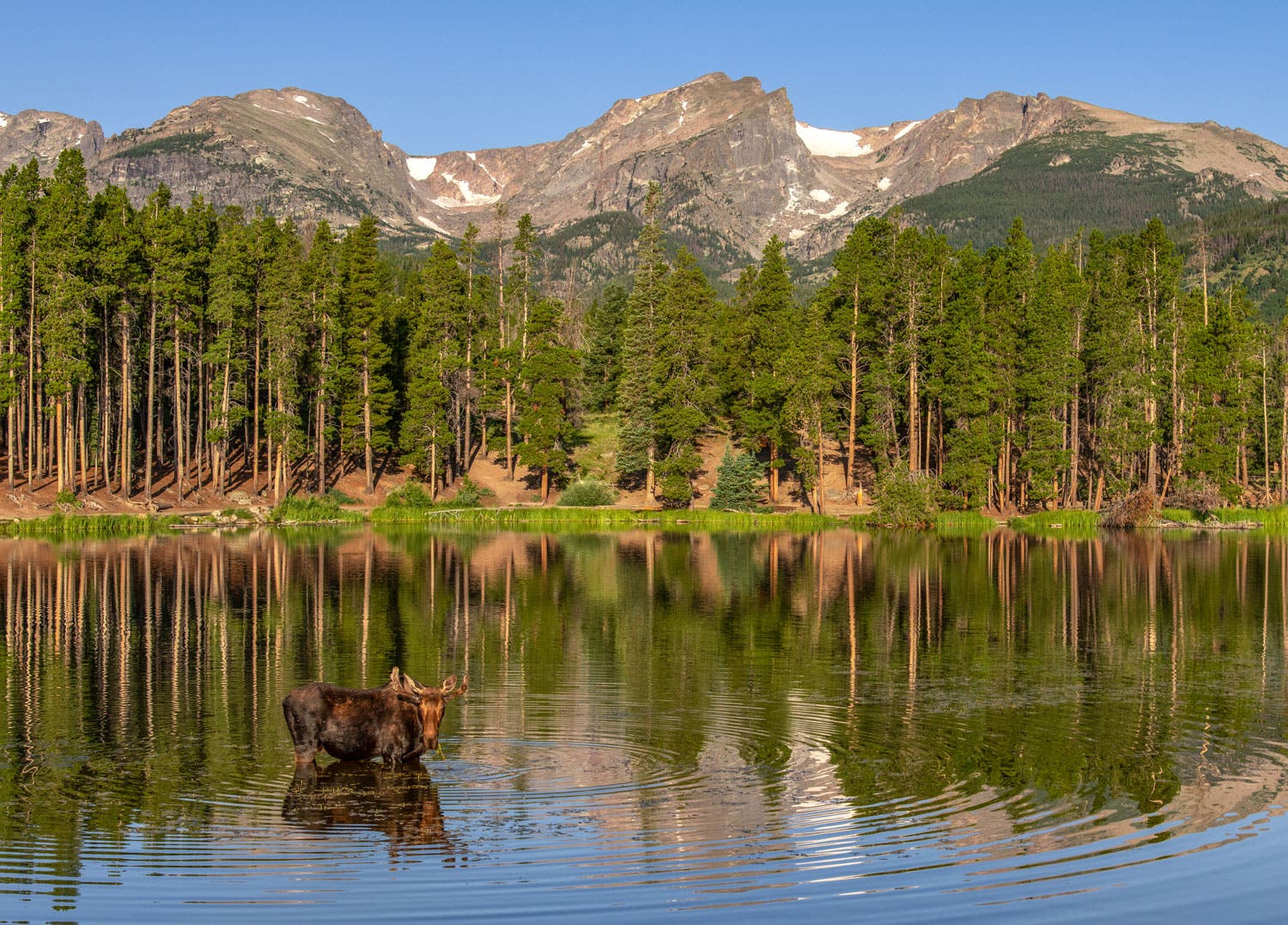Where to See Moose in Rocky Mountain National Park

Moose kisses at Sprague Lake in Rocky Mountain National Park (Photo: Amanda Cornelison)

Until the late 1970s it was rare to catch a glimpse of moose in Colorado, even though there are records of moose sightings as far back as the 1850s, according to an Aspen Daily News article. In 1978, Colorado Parks and Wildlife first introduced 12 moose from Utah to the area west of the Never Summer Mountains near the town of Walden. In 1979, another 12 from Wyoming were released in the same region in the Illinois River drainage. This early population thrived and some moved into the Laramie River Valley. In 1987 a transplant of 12 moose from Wyoming helped establish a strong population in that valley as well.
Today, the state’s moose populations are doing well with an estimated 2,500 living throughout the state, according to Colorado Parks and Wildlife. Moose are primarily found on the west side of the park, but they are occasionally spotted in wet areas on the east side as well.
Seeing moose in the Park typically is not that difficult. Since they are so large it’s hard to miss them grazing in the low-lying valleys and wet areas near lakes. Moose are known to return to a favorite feeding ground with surprising regularity each year which makes it easier for rangers to predict where they will be. As long as there are aquatic grasses and willows to feed on, they will stay in the same area.
Moose on the West Side of the Park

Rangers suggest heading up the Kawuneeche Valley and also the Colorado River near Timber Creek Campground on the west side of the park. Another great spot is along the Colorado River up by Lulu City, also on the west side of the park. Though a bit of a hike, moose are known to graze here and the seasonal springtime wildflowers are spectacular.

Visitors should remember that Trail Ridge Road is closed during the winter/spring season, so to get to the west side of the park from Estes Park, you will need to go around the south side of the park to get to Grand Lake.
Moose of the East Side of the Park
Moose are most comfortable in cold damp environments. Although fewer in number on the east side and rarer to see, moose can sometimes be found in the marshy areas around Sprague Lake and Cub Lake.

Safe Moose Watching
If you do happen to see a moose make sure to remember they are wild and unpredictable. Since moose on a whole don’t have the best eyesight it is imperative you do not approach them. Typically moose on guard either raise their head high, or dip their head to a low position. If you do happen to encounter an angry moose it is best to leave slowly and not provoke the animal.
More About Moose in the Rockies
Moose aren’t small. In fact they are quite large and rather clumsy looking. Traveling typically in small groups, moose feed on water plants, aspen, and willow. It is not rare to see a cow traveling with her mate or calf close behind.
During September through November their mating season (rut) takes place as bulls seek out a mate. Unlike Elk, which can have several mates at the same time, moose typically stick to one cow at a time.